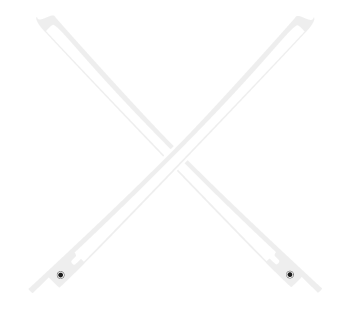Owning an instrument can be a very rewarding experience. No matter what instrument you chose to purchase, you quickly become accustomed to its specific characteristics. These characteristics all come from the delicate balance of tension and strength that makes instruments work. This knowledge is still important to keep in mind after you make the initial purchase.
As with many things we own, proper maintenance and repair over time is incredibly important in ensuring that the performance of the instrument remains at its best. Although, at first you may not see the subtle shifts and changes that happen, you begin to notice them more as you become accustomed to your instrument and how it sounds. Things like changes in weather will make the wood fluctuate, changing characteristics like tension and positioning of many different pieces. It's important to know when to replace things like strings, or when your instrument may need service or repair. Proper maintenance will lead to your instrument sounding and playing better, and increasing its overall longevity.
What types of things should you look for and maintain regularly? Although some things differ between instruments, many share similar themes in maintenance. All string instruments, for example, should have their strings replaced every so often as the strings stretch and wear out. This usually is a noticeable improvement to how the instrument plays, and many musicians begin to form a preference on what types of strings they use based on how they play. Other maintenance may vary depending on the instrument, so it is important to refer to an expert on the specific instrument.
For example, a violin relies on many pieces and substantial amounts of tension to produce its sound. As you look at a violin, you can see many points that are under a lot of stress, and may need to occasionally be readjusted to ensure that they are performing properly. Listed below are some things that a violin owner should look for in both regular maintenance, and occasional repairs.
|
|
Sometimes, large repairs and restoration are required on an instrument. Whether it is an instrument that has been sitting or neglected for many years, or an incident happens like dropping it, there are methods of fixing the instrument and bringing it back life. Although these repairs are often very time consuming, the results can be astounding. It is extremely important that all of these type of repairs are done by a professional.
The techniques, tools and supplies used are very specific to each instrument, and a trained professional should understand how each repair will affect the sound and playability of the instrument. Listed below are some examples of what might be addressed when repairing or restoring a violin.
Large repairs and restoration
|
|
Our Philosophy
Instrument repair and restoration is our craft and we take great pride in what we do. In addition to servicing a wide range of string instruments, much of our inventory consists of amazing and unique vintage instruments that we've had the opportunity to give new life.
Our intent is to restore instruments to their fullest function as a healthy and attractive whole picture. In this process we conserve and respect the maker's original intent and creative product as much as possible in the repair and restoration of each instrument. We respect the age and character that an old instrument acquires, and do not intend to remove the patina of a long lifetime, but rather to draw attention to the whole instrument instead of noticeable repairs.
The analysis and diagnosis of problems on an instrument is also complex. We consider how each issue affects the whole instrument and make a plan to safely address the issues.
If you have an instrument that is in need of repair, or a general inquiry please contact us. Find us on Facebook and Instagram for updates and an in depth look at some of our latest projects.










